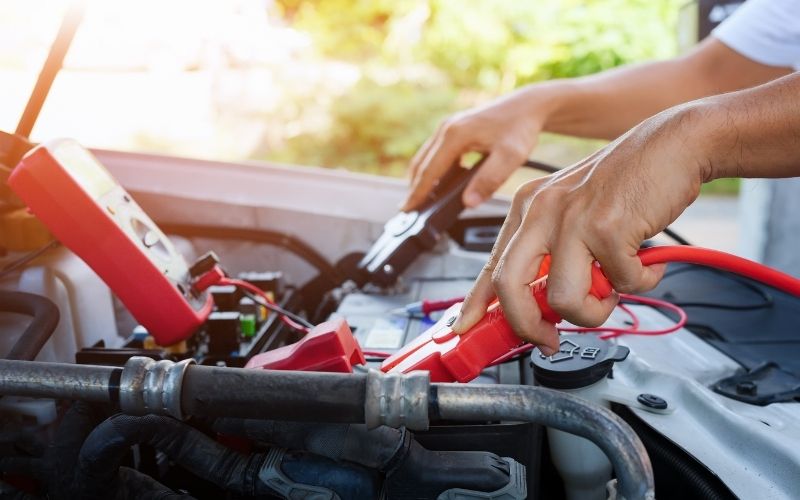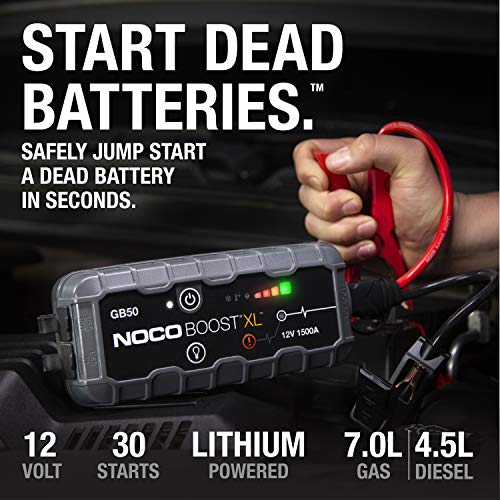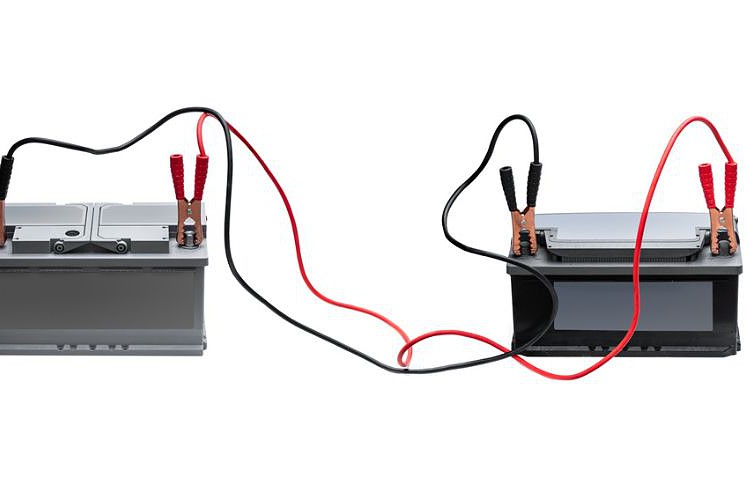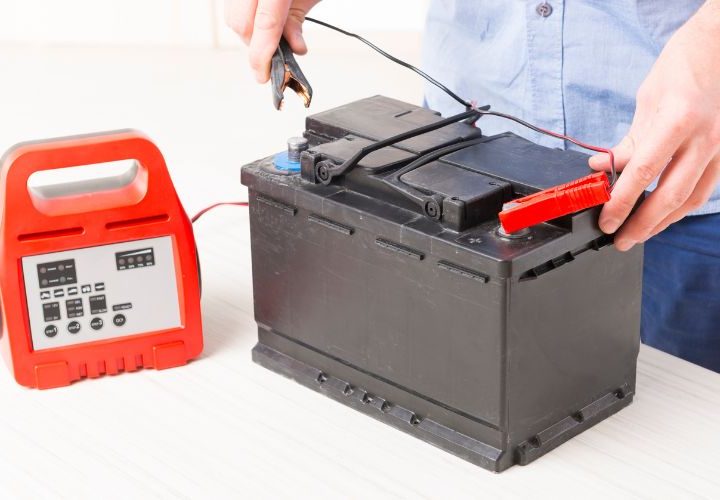If your boat has been sitting in the garage all winter, chances are it’s going to have some trouble starting up once boating season comes around again.
So, if your starting battery is dead, what are you supposed to do? Can you jump-start a marine battery? And if so, how?
Can you use a car battery?
Can a jump start save a marine battery that’s completely dead?
Keep reading!
In this article, we’ll answer all of these questions.
Table of Contents
Which Battery Needs to be Jumped?

If you have more than one marine battery on your boat, it’s important to know which one is dead. Chances are, you have a starting battery to power up the outboard motor and a deep cycle battery to power your electronics whenever the motor isn’t running.
If the problem is with your starting battery, then you won’t be able to start the engine. If the problem is with your deep cycle battery, then you’ll be able to start the engine just fine, but none of the electronics will work when the engine is off.
You should only jump start your starting battery. A jump start is not a charge, it is only a quick burst of energy used to start the motor running.
Once the motor is running, the alternator will recharge your starting battery. It will not be able to recharge your deep cycle battery unless you have it wired into the main engine. If your deep cycle battery is discharged, you will need to allow it to recharge on the charger.
How to Jump-Start a Marine Battery?
To jump start your starting battery, you’ll want to use a portable jump starting pack like the one shown in the video below. You can find many similar products on Amazon.
To jump your marine battery using a jump starter pack, follow these steps:
- Locate the correct battery on your boat. The starting battery should be located near the engine, which may be housed under a bench seat or behind some paneling.
- Plug in the jump starter. If you have a deep cycle battery that powers an electrical outlet on the boat, you can plug directly into this outlet. If not, you may need an extension cord running from another power source.
Not all portable jump starters need to be plugged in. Some run off an internal battery. If this is the case with your jump starter, make sure to keep it fully charged so it is ready when you need it. - Connect the clamps to the jumper leads or battery terminals, black to black and red to red. Connect the red ones first. At this point, double-check to make sure the jump starter pack is turned on.
- Start your engine. With the jump starter pack still hooked up, turn the ignition to power up your motor. It should turn over like normal.
- Keeping the motor running, remove the jump starter pack, disconnecting black first, then red. Unplug the pack if necessary, and store it away in a water-safe part of your boat so you’ll have it if you need it again.
- Run the boat engine for at least 20 to 30 minutes to allow the starting battery to recharge.
Remember, this process is only useful for your boat’s starting battery. Do not attempt to charge a deep cycle battery in the same way.
Can You Jump a Battery that is Completely Dead?

So, what if your starting battery has been run down completely and is showing a zero percent charge? Is it possible to salvage this battery with a jump start?
As with everything, it depends.
If a battery is showing a charge of zero, it may have simply been discharged all the way, and in this case, you can jump start it and let it recharge with the alternator.
Keep in mind that allowing a battery to discharge completely may cause damage. The battery may no longer hold a charge as well, and it may discharge more quickly the next time you try to use it.
If the battery has been fully discharged multiple times, or if it has been poorly cared for, it may become unable to hold or to take a charge. If this is the case then jumping it won’t do any good – you’re going to need a new battery.
If your battery is fairly new but it doesn’t respond to a jump start, you may want to check your jump starter pack or the alternator on your boat.
A bad alternator will prevent the battery from continuing to charge after you’ve removed the jumper cables. Problems with the jumper cables themselves may prevent power from the pack from passing to the boat battery.
Can You Jump Start a Marine Battery with a Car Battery?

The short answer is yes, you can. But it’s not the best idea.
Car batteries are different from marine batteries. Just as you’re not supposed to use small mix small household batteries of different brands and ages, wiring car, and marine batteries together could cause problems.
Your car battery may be damaged in the process because the marine battery may sap it of more power than it can safely output. If you have a relatively small boat with a small battery, the car battery may damage the boat battery in the same way.
If your car battery and your boat’s starting battery are similar in size and amperage, you may be able to safely jump start your boat with your car. However, there is still the risk of damage to the boat, the car, or both, and most boaters aren’t willing to risk it.
One thing you should never do is use a car battery to jump start a discharged deep cycle battery. Your car battery will be sapped of power before the deep cycle battery has received a sufficient charge to work.
The way to recharge a deep cycle battery is to put it on a charger and allow it to charge for the necessary amount of time. There is no “quick charge” method, and attempting to jump start it will likely damage your car battery.
Conclusion
It’s easy to jump start a marine battery with a portable jump starter pack. And, once your boat is running again, you can keep the portable starter on board so you won’t have to worry about becoming stranded out on the water.

Sarah Hood has been writing for Anchor Travel since 2021. When she’s not writing, she enjoys cooking, singing, and spending time in the great outdoors.

